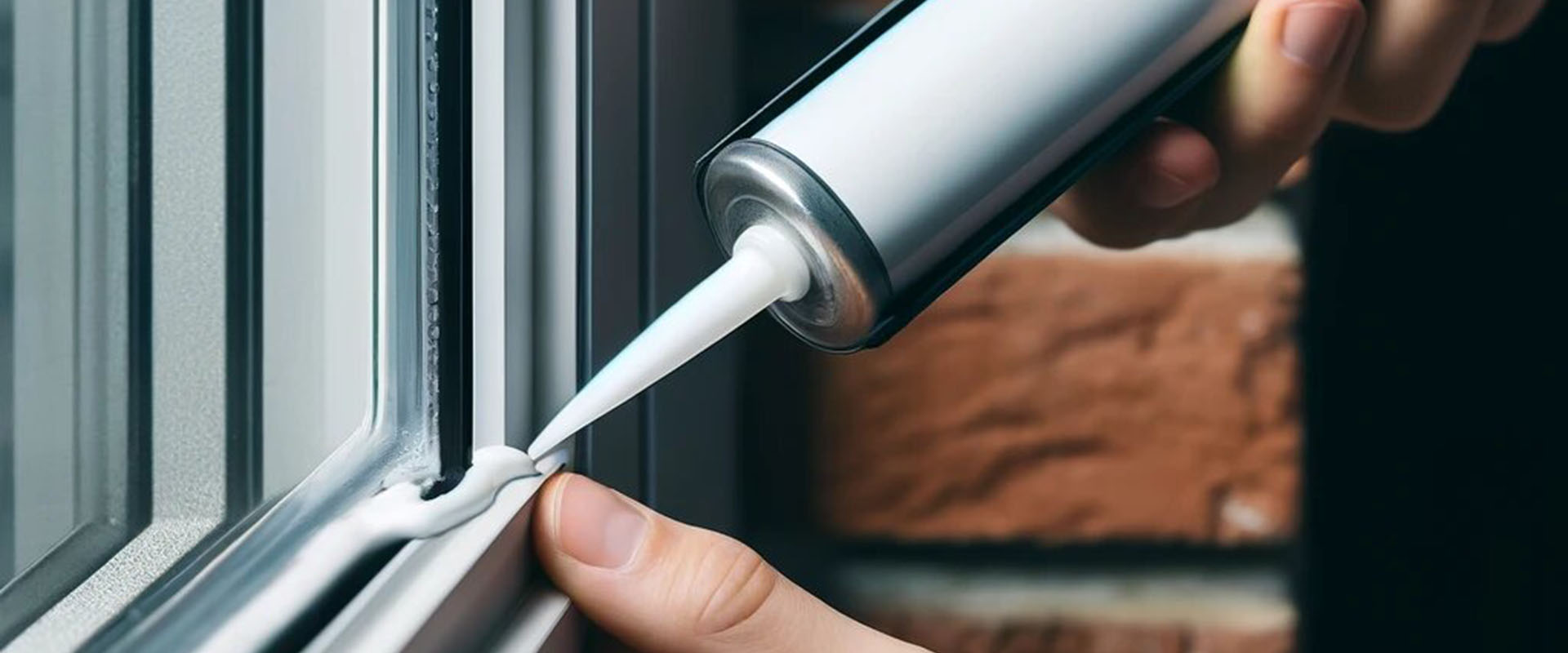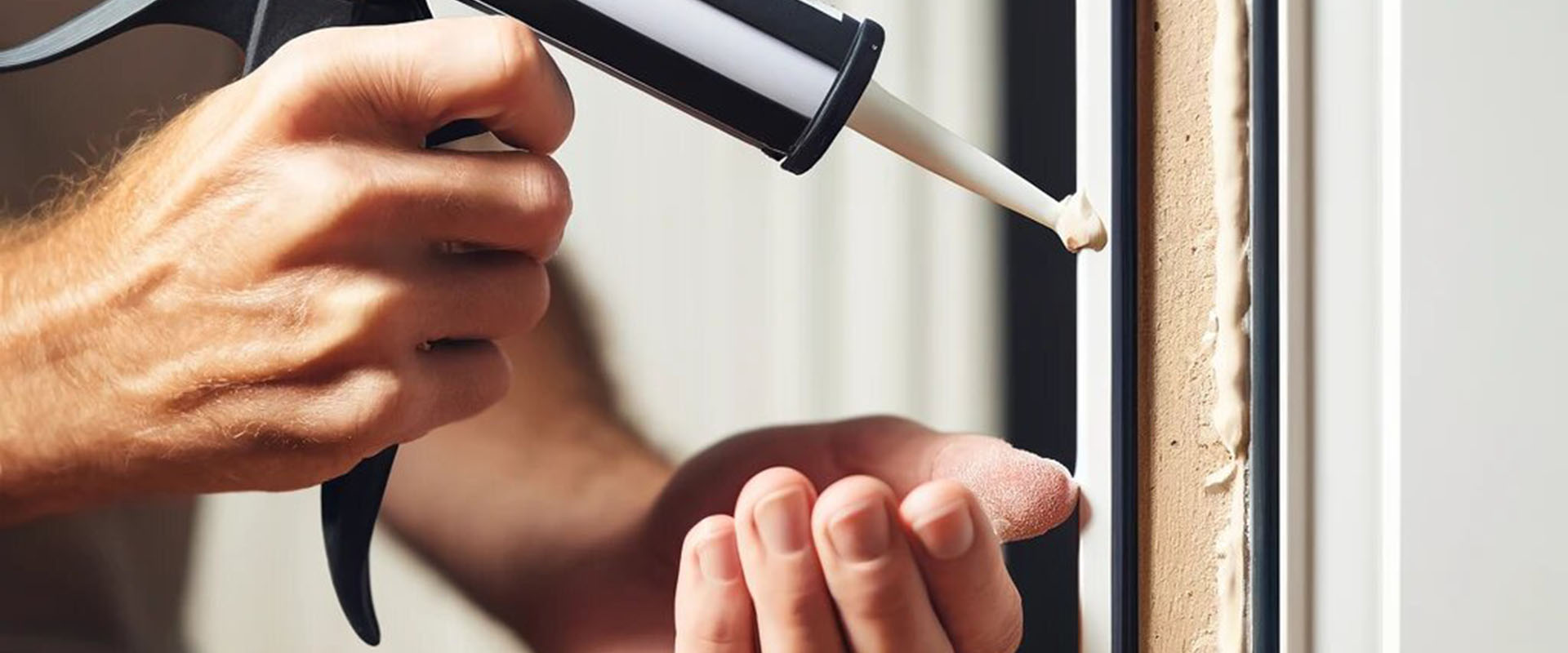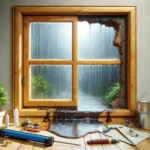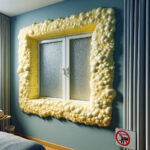Caulking is an essential part of your home that helps keep your windows and doors watertight. It acts as a barrier against air and water infiltration, which helps to reduce heating and cooling costs and improve indoor air quality. However, over time and bad weather, caulking can degrade and lose its effectiveness. So, it’s important to know when it’s time to replace it to avoid energy loss and potential damage from water ingress. In this article, we’ll explain how to tell if your caulk needs to be replaced and why it’s important to do it quickly.
 Another sign that your caulk needs to be replaced is a difference in color or texture. Over time, exposure to the elements can cause the caulk to lose its original color or even cause it to change texture, making it more brittle or stiff. If you notice a difference in color or texture on your caulk, it’s likely that the material has undergone considerable wear and tear and it’s time to replace it.
In addition, changes in texture may indicate that the caulk is degrading and is no longer able to perform its function effectively. It is important to replace caulking in time to maintain the structural integrity of your home and ensure protection from the elements.
Another sign that your caulk needs to be replaced is a difference in color or texture. Over time, exposure to the elements can cause the caulk to lose its original color or even cause it to change texture, making it more brittle or stiff. If you notice a difference in color or texture on your caulk, it’s likely that the material has undergone considerable wear and tear and it’s time to replace it.
In addition, changes in texture may indicate that the caulk is degrading and is no longer able to perform its function effectively. It is important to replace caulking in time to maintain the structural integrity of your home and ensure protection from the elements.
 If your energy bills are rising without you changing your habits, it may be a sign that your caulking needs to be replaced. Worn caulking can cause air leaks that lead to energy loss and increased heating or cooling bills. By replacing your caulk, you can improve your home’s energy efficiency and reduce your energy costs. It’s important to note that high energy bills can also be caused by other issues, such as poor insulation or a faulty heating or cooling system. If you’re concerned about high energy bills, it’s recommended that you hire a professional to evaluate your home and determine what’s causing the rising costs.
If your energy bills are rising without you changing your habits, it may be a sign that your caulking needs to be replaced. Worn caulking can cause air leaks that lead to energy loss and increased heating or cooling bills. By replacing your caulk, you can improve your home’s energy efficiency and reduce your energy costs. It’s important to note that high energy bills can also be caused by other issues, such as poor insulation or a faulty heating or cooling system. If you’re concerned about high energy bills, it’s recommended that you hire a professional to evaluate your home and determine what’s causing the rising costs.
Sign #1: Caulking is cracked or missing
Caulking plays a crucial role in protecting your home from weather and moisture. If you notice that your caulk is cracked or missing, it’s important to replace it quickly. Cracks or open spaces allow water, cold air, and heat to seep into your home, which can lead to increased energy bills and long-term structural damage. If you notice any cracks or open spaces in your caulk, it’s time to replace it.Sign #2: Caulking has a different color or texture
 Another sign that your caulk needs to be replaced is a difference in color or texture. Over time, exposure to the elements can cause the caulk to lose its original color or even cause it to change texture, making it more brittle or stiff. If you notice a difference in color or texture on your caulk, it’s likely that the material has undergone considerable wear and tear and it’s time to replace it.
In addition, changes in texture may indicate that the caulk is degrading and is no longer able to perform its function effectively. It is important to replace caulking in time to maintain the structural integrity of your home and ensure protection from the elements.
Another sign that your caulk needs to be replaced is a difference in color or texture. Over time, exposure to the elements can cause the caulk to lose its original color or even cause it to change texture, making it more brittle or stiff. If you notice a difference in color or texture on your caulk, it’s likely that the material has undergone considerable wear and tear and it’s time to replace it.
In addition, changes in texture may indicate that the caulk is degrading and is no longer able to perform its function effectively. It is important to replace caulking in time to maintain the structural integrity of your home and ensure protection from the elements.
Sign #3: Caulking is soft or sticky to the touch
Soft or sticky caulk is another sign that you need to replace your caulk. If you find that the caulk sticks to your fingers when you touch it, it is probably degrading. This sign may indicate that the caulk has been exposed to excessive heat, water or moisture, which has caused it to deteriorate. When caulking is soft or sticky, it loses its elasticity and can no longer perform its function of effectively sealing cracks and gaps. It is important to replace degraded caulking as soon as possible to avoid sealing problems and air or water leaks that could cause damage to your home or building. If you encounter this problem, don’t wait to replace your caulk. Contact a professional for assistance in choosing the appropriate caulking and to proceed with the correct installation to ensure effective sealing.Sign #4: Mold appears on the caulk
If you notice mold stains on your caulk, it may be a sign that water is seeping behind the caulk and getting trapped, which can cause mold to grow. Mold can be dangerous to your health, especially if it spreads through your home, so it’s important to address the problem as soon as possible. In some cases, it may be possible to clean the mold on the caulk, but if it reappears quickly, it is likely that the caulk is in poor condition and needs to be replaced. New caulking can prevent water from getting behind walls and reduce the risk of mold. If you have any doubts, it is best to call a professional to assess the condition of your caulking and make the necessary repairs.Sign #5: Drafts are felt near windows or doors
Another sign that it may be time to replace your home’s caulking is the presence of drafts near your windows or doors. If you feel cold air coming into your home even when your windows and doors are closed, it may be due to cracks or breaches in the caulking. Drafts can also cause an increase in your energy bills, as your heating system has to work harder to maintain a consistent temperature in your home. By replacing your caulking, you can prevent drafts and improve your home’s energy efficiency. It’s important to note that drafts can also be caused by other problems, such as ill-fitting doors and windows or insufficient insulation. However, if you’ve already checked these items and drafts persist, it’s likely that caulking is the source of the problem.Sign #6: Water infiltration appears during rain or slush
If you notice water infiltration in your windows or doors, it may be a sign that your caulking is worn out and needs to be replaced. Water can seep through cracks and gaps between the caulk and the window or door, causing structural damage to your home and leading to moisture problems. Water infiltration can also lead to mold growth and the degradation of your thermal insulation, which can increase your heating and cooling costs. If you notice any traces of moisture or mold on your walls or ceilings, it is likely that your caulking needs to be replaced.Sign #7: Energy bills are rising for no apparent reason
 If your energy bills are rising without you changing your habits, it may be a sign that your caulking needs to be replaced. Worn caulking can cause air leaks that lead to energy loss and increased heating or cooling bills. By replacing your caulk, you can improve your home’s energy efficiency and reduce your energy costs. It’s important to note that high energy bills can also be caused by other issues, such as poor insulation or a faulty heating or cooling system. If you’re concerned about high energy bills, it’s recommended that you hire a professional to evaluate your home and determine what’s causing the rising costs.
If your energy bills are rising without you changing your habits, it may be a sign that your caulking needs to be replaced. Worn caulking can cause air leaks that lead to energy loss and increased heating or cooling bills. By replacing your caulk, you can improve your home’s energy efficiency and reduce your energy costs. It’s important to note that high energy bills can also be caused by other issues, such as poor insulation or a faulty heating or cooling system. If you’re concerned about high energy bills, it’s recommended that you hire a professional to evaluate your home and determine what’s causing the rising costs.



